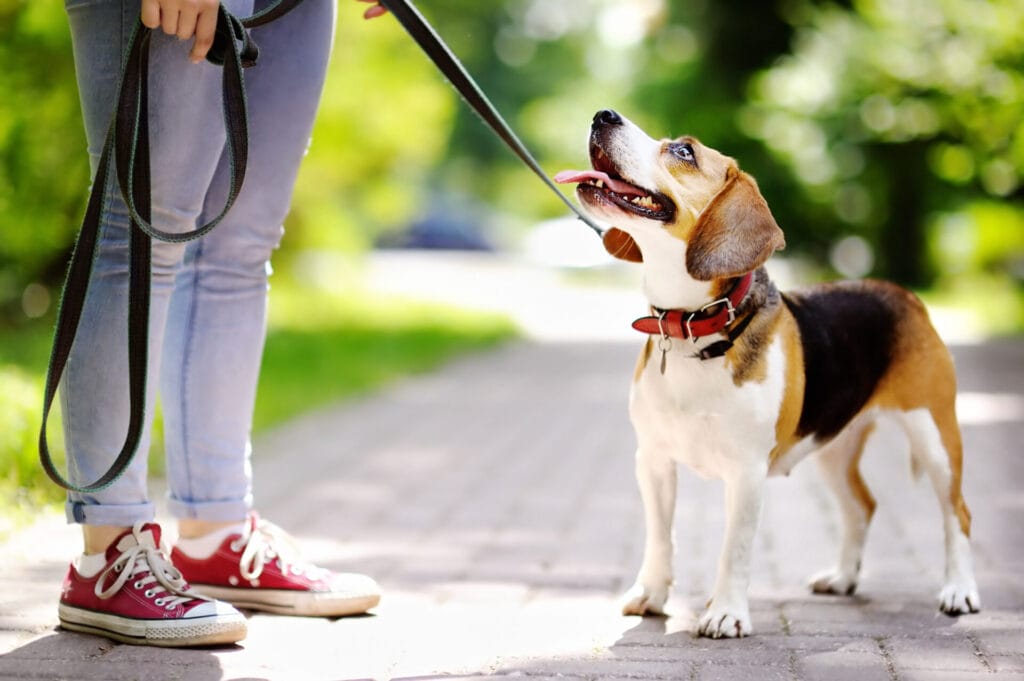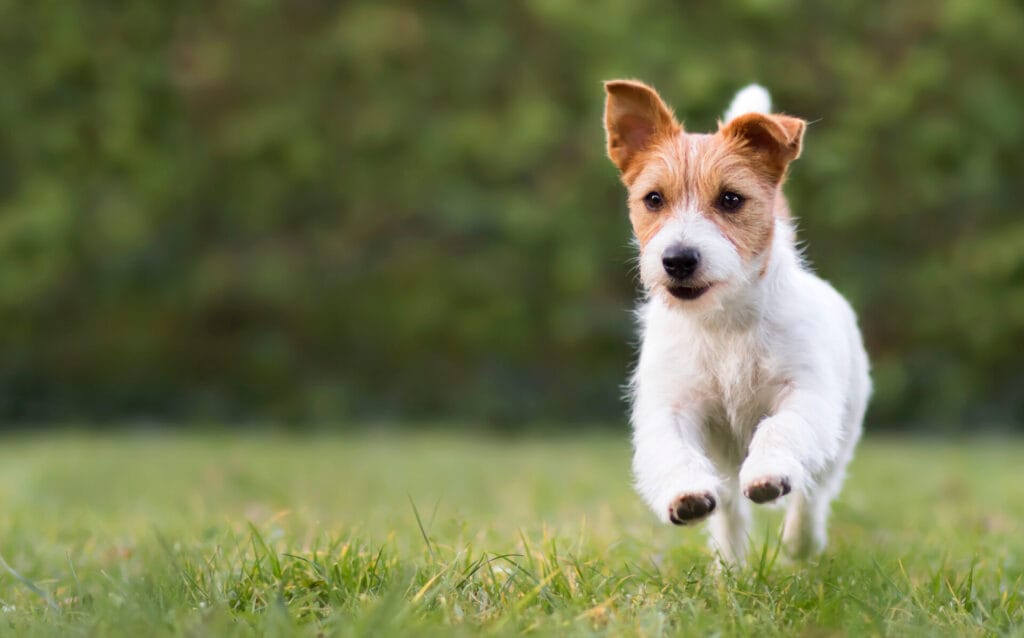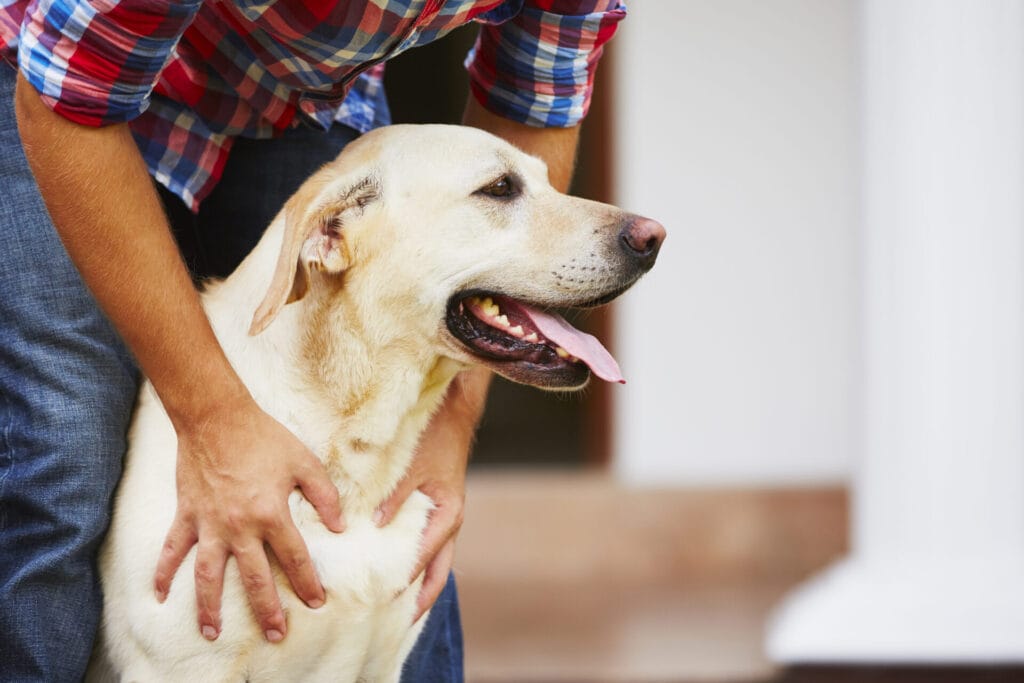Recall training is an important skill for dogs to have. You can get your dog’s attention and prompt them to approach you indoors and outdoors. However, it can be difficult for dogs because to complete the behavior, they must stop what they are doing, ignore distractions, and move away from something they might find interesting in order to come to you. By turning recalls into a fun activity, you’ll be able to teach this skill and make it fun.

Recall Is the Most Important Skill
Recall training is so essential because it allows you to get your dog to come to you anytime, anywhere. If your dog knows how to come when called, you’ll be able to get your dog’s attention when you need to. This is important in case you accidentally drop your dog’s leash or your dog bolts outside. Having strong recall skills can keep your dog safe and allow you to call your dog away from a busy street or prevent your dog from approaching people or other dogs.
Supplies needed for recall training:
- Treats your dog is excited about
- Leash
Optional supplies for recall training:
- A long-line leash for advanced recall practice outside in open areas.
- Clicker if you are clicker training.
Picking The Right Treats
When teaching recall to your dog, you’re going to need treats that your dog is excited about. When teaching recalls, we want to make sure to always reward our dogs. Recalls are one of the most challenging things we will teach our dogs because in the real world, they will have to turn away from things they want or are interested in to come to you. When you are teaching your dog a new skill, you will need lots of treats. While training it’s best to use small low-calorie treats because you’re going to feed a ton of them. For dogs with sensitive tummies, single-protein treats are also especially helpful.
Introduce Recall Training at Home
When you start to teach recall to your dog, it’s important to start at home where there are few distractions. To start teaching recall, have small pieces of treats your dog is excited about like the Spot & Tango Snacks. Show your dog the treat in your hand, praise your dog for moving towards you, and give your dog the treat. As you continue to practice, you can introduce a verbal cue of your choice like “come” and give your dog the treat when they get to you.
Soon, you’ll be able to call your dog from further distances. When you can call your dog from anywhere in your home, you’re ready to start adding more distractions. With your dog in a securely fenced area outside, or on a leash, practice calling your dog to you. Make sure to give your dog lots of praise and treats as they come when called. Try to find time to practice recall everyday so it is a skill that your dog remembers.
Not Food Motivated?
But what if your dog isn’t food motivated? Having a dog that doesn’t get excited for treats can make recall training more difficult but not impossible. For these dogs, find a reward that they are excited about and will want to work for. By switching up your treats, you may be able to help build your dog’s food drive. For other dogs, no matter how novel the food is, they won’t care about it. With these dogs who aren’t food motivated, we want to get creative and figure out exactly what they find rewarding. Many dogs who aren’t food motivated really enjoy playing with balls or their toys. In this case, instead of using treats as a reinforcer, you can use play and toys to reinforce your dog while training them to come when called.
Make Recall Training A Game
We always want to make recall training a positive and fun experience for our dogs. Never scold or punish your dog for coming to you, even if they are slow or don’t come when you call. We want our dogs to only have positive associations with being near us. You can make recall training extra fun for your dog by turning it into a game you can play together. When your dog comes when called, treat them, and engage your dog in a favorite game like fetch or tug. If you’re looking to add more play into your recall training, you can play recall games together.
While out walking your dog or playing in the yard, get their attention. Then, run a few steps away from your dog. As your dog turns and follows you, give your verbal cue, take another few steps, and then stop and reward your dog for following you.

Be Patient
If your dog doesn’t come when you’re practicing, that’s a good indicator that the distraction level was too high for your dog’s current skill level. The biggest mistake that people make when teaching recall is moving too quickly with training. When you increase the difficulty too quickly, you increase the likelihood of your dog not obeying. To avoid this, practice in low distraction environments and slowly build up the level of distraction by incrementally moving to areas with more distractions. By slowly building up your dog’s confidence, you’ll be able to help your dog build a strong reliable recall for life.




















